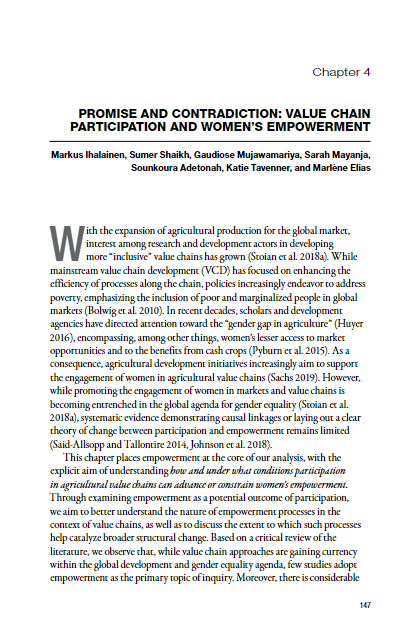With the expansion of agricultural production for the global market, interest among research and development actors in developing more “inclusive” value chains has grown (Stoian et al. 2018a).
While mainstream value chain development (VCD) has focused on enhancing the efficiency of processes along the chain, policies increasingly endeavor to address poverty, emphasizing the inclusion of poor and marginalized people in global markets (Bolwig et al. 2010). In recent decades, scholars and development agencies have directed attention toward the “gender gap in agriculture” (Huyer 2016), encompassing, among other things, women’s lesser access to market opportunities and to the benefits from cash crops (Pyburn et al. 2015).
As a consequence, agricultural development initiatives increasingly aim to support the engagement of women in agricultural value chains (Sachs 2019). However, while promoting the engagement of women in markets and value chains is becoming entrenched in the global agenda for gender equality (Stoian et al. 2018a), systematic evidence demonstrating causal linkages or laying out a clear theory of change between participation and empowerment remains limited (Said-Allsopp and Tallontire 2014, Johnson et al. 2018).
Ihalaine, Markus; Shaikh, Sumer; Mujawamariya, Gaudiose; Mayanja, Sarah; Adetonah, Sounkoura; Tavenner, Katie; Elias, Marlène.

